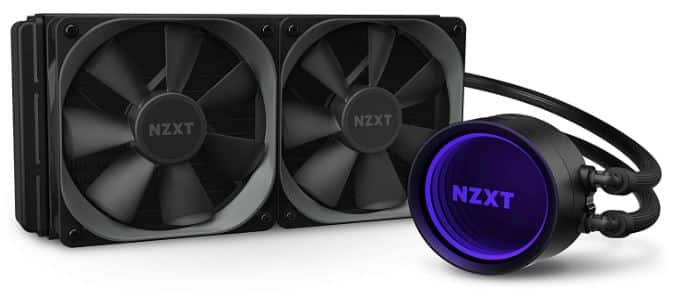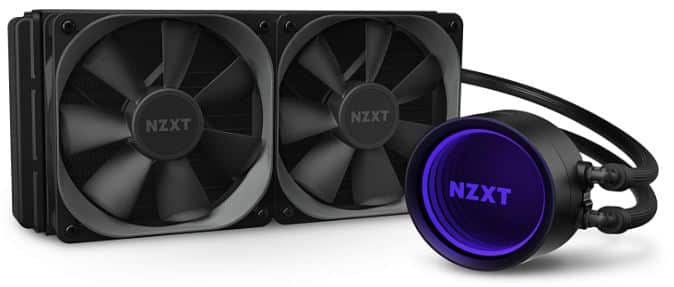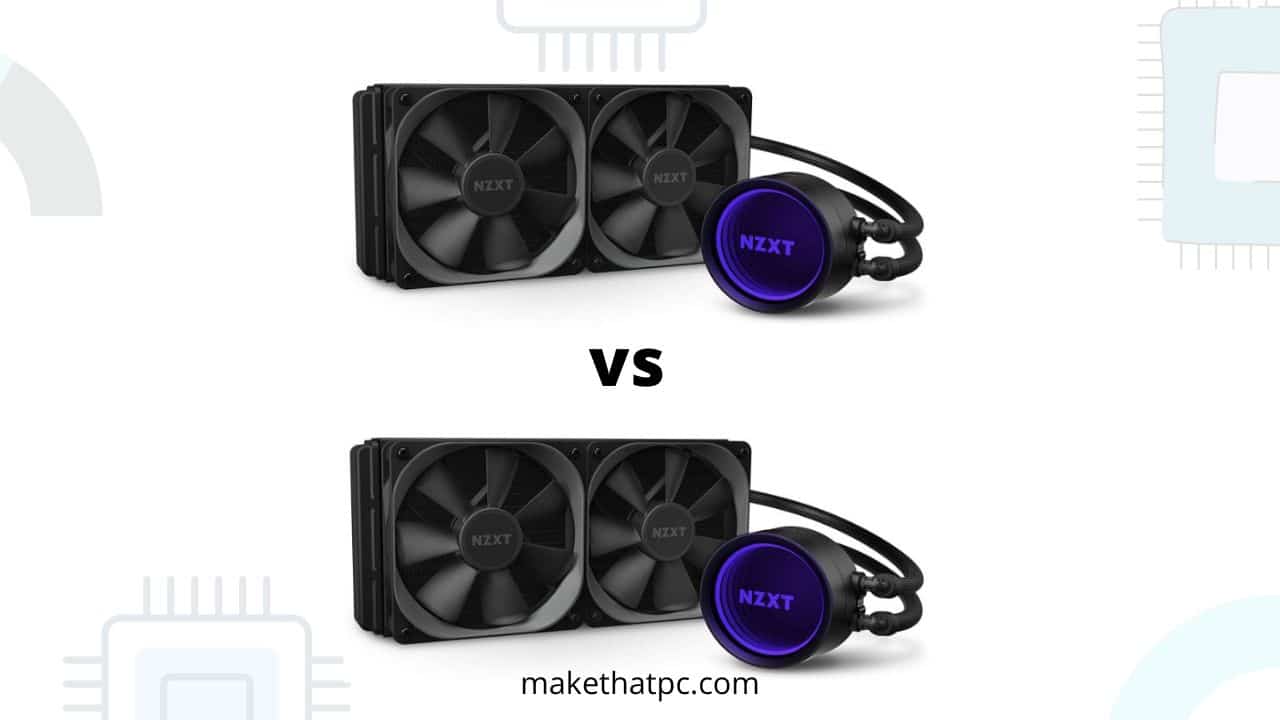The NZXT Kraken X53 and X63 are both liquid CPU coolers designed for use in PC gaming systems. They are similar in many ways, but there are also some key differences between them.
One of the main differences between the X53 and X63 is size. The X53 is a 240mm cooler, meaning it has a radiator that is 240mm long, while the X63 is a 280mm cooler, with a 280mm long radiator. This means that the X63 is slightly larger and may be a better choice if you have a larger case or if you want to add more cooling capacity to your system.
Another difference between the two coolers is the included fans. The X53 comes with two 120mm fans, while the X63 comes with two 140mm fans. The larger fans on the X63 may be able to move more air and provide better cooling performance, but they may also be louder.
Both the X53 and X63 use the same pump and water block design, which is based on NZXT’s proprietary Asetek design. They both come with software that allows you to control the RGB lighting on the pump and fans, as well as monitor the coolant temperature and adjust the fan speeds.
Overall, the choice between the NZXT Kraken X53 and X63 will depend on your specific needs and preferences. If you have a larger case or want the best possible cooling performance, the X63 may be the better choice. However, if you have a smaller case or are looking for a more budget-friendly option, the X53 may be a better fit for you.

NZXT Kraken X53 Specifications Comparison
| Specifications | Kraken X53 | Kraken X63 |
| Radiator Size | 240mm | 280mm |
| Fans | 2x120mm | 2x140mm |
| Fan Speed | 500-1,800 RPM | 500-1,800 RPM |
| Noise Level | 21-36 dBA | 21-36 dBA |
| Compatibility | Intel LGA 115x, 1366, 2011, 2011-3, 2066; AMD AM4, AM3+, AM3, AM2+, AM2, FM2+, FM2, FM1 | Intel LGA 1151, 1150, 1155, 1156, 1366, 2011, 2011-3, 2066; AMD AM4, AM3+, AM3, AM2+, AM2, FM2+, FM2, FM1 |
| Pump Dimensions | 80mm x 80mm x 52.9mm | 80.0 x 80.0 x 55.0 mm |
| Pump Noise | 21 dBA | 21 dBA |
| RGB Lighting | Yes | Yes |
| Cooling Performance | Up to 280 W TDP | Up to 360 W TDP |
| Bearing Type | Fluid Dynamic Bearing | Fluid Dynamic Bearing |
| Control Method | PWM | PWM |
| Price |
Design Difference between Kraken X53 and X63
Both of the AIO coolers are similar in looks. Of course, there is a little difference in the size i.e. X63 has a little bigger size, but they are the same in design. So, there is no advantage you can get by picking any one of these both.
Cooling Performance Difference
The NZXT Kraken X53 and Kraken X63 are both liquid CPU coolers that are designed to provide efficient cooling for high-performance CPUs. The main difference between the two coolers is their cooling performance, with the Kraken X63 offering higher cooling capacity than the Kraken X53.
The Kraken X53 has a TDP (thermal design power) rating of 280W, which means it is capable of dissipating up to 280 watts of heat. The Kraken X63 has a TDP rating of 360W, which means it is capable of dissipating up to 360 watts of heat. This means that the Kraken X63 has a higher cooling capacity and may be able to handle more demanding workloads or higher-performance CPUs.
It’s important to note that the TDP rating is not a measure of the cooler’s performance or efficiency, but rather a measure of its capacity. The actual performance of a cooler will depend on a variety of factors, including the ambient temperature, the cooling efficiency of the radiator and fans, and the efficiency of the water block.
Price


Which one to choose and why?
The Kraken X53 is around 20$ cheaper than the X63. The performance difference isn’t going to be very high but you will see a little better cooling capabilities with the X63.
Theoretically, If your CPU has 150-200 TDP, it is good to stick to the X53. However, if the TDP is higher, the X63 is a good option but it’s not the best. For higher TDP CPUs, it is better to go for a 330 or 360mm AIO.
It’s important to note that the TDP rating is not a measure of the cooler’s performance or efficiency, but rather a measure of its capacity. The actual performance of a cooler will depend on a variety of factors, including the ambient temperature, the cooling efficiency of the radiator and fans, and the efficiency of the water block.
So, basically, these both will offer you almost similar cooling performance. There is no huge difference in the actual cooling performance.
Let me know your thoughts in the comments!

I am Anshul Rana, an experienced author specializing in PC gear reviews and Windows 10 software tutorials. With a strong passion for technology and an in-depth understanding of the PC industry, I provide insightful and detailed analyses of computer peripherals, gaming gear, and software solutions. My writing style is concise yet informative, making complex topics accessible to both beginners and advanced users. Through my reviews and tutorials, I aim to offer valuable guidance, helping readers make informed decisions to enhance their PC experience and explore the vast possibilities of Windows 10 software.










